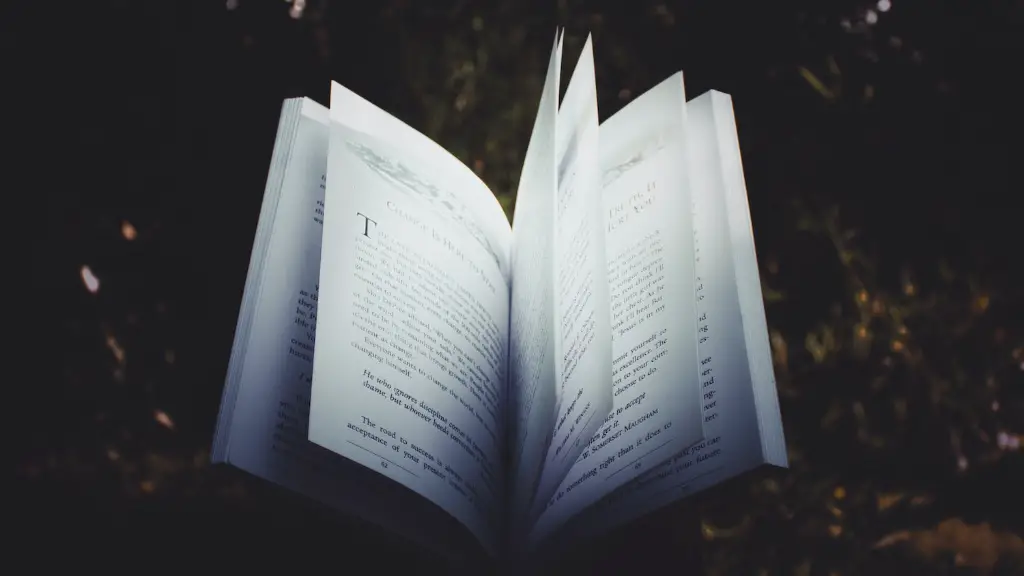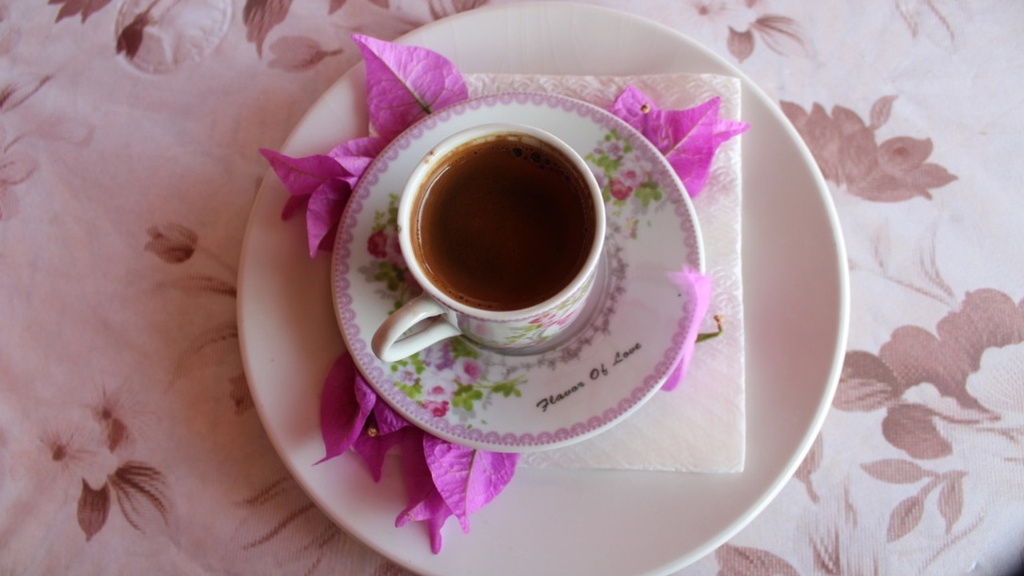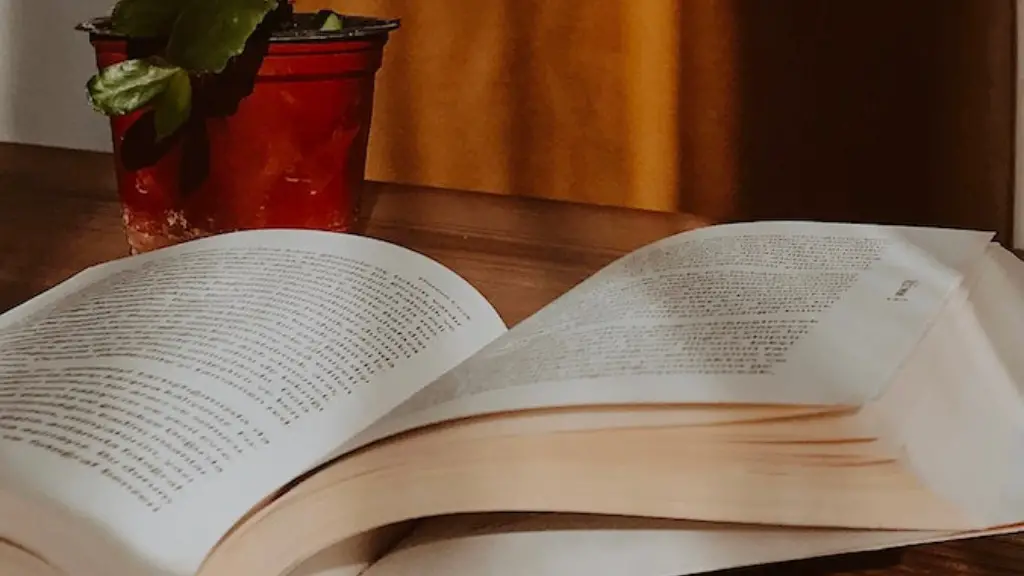Lyric Definition
Lyric poetry is an ancient form of poetry that gives the reader a deeper perspective of the poet’s emotions and innermost thoughts. It can be found in written form or heard as a song, but for the purpose of this article, it will be discussed as a written form of poetry. Lyric poetry is usually written in the first-person, as though the story is being told from the perspective of the poem’s speaker or protagonist, and can range from a few lines to a full-length narrative poem. While many different poetic forms use meter, rhyme and stanza structures, what really sets lyric poetry apart is its focus on strong emotions and personal expression.
Common features of lyric poetry include rhyme, meter, imagery and metaphor. Rhyme is a pattern of words, usually at the end of successive lines, that share the same sound. Meter refers to the beat or rhythm of the poem, which can be regular or irregular. Imagery is language that appeals to the five senses to create a stronger picture of the poet’s feelings and experience. Metaphors are how the poet uses symbols and comparisons to express an idea.
When reading a lyric poem, the reader should focus on the poet’s feelings, the poem’s structure and the words themselves. Pay attention to the structure of the poem, such as the length of the lines and stanzas, the rhyme scheme and the meter, as well as how they create an emotion and a sound or rhythm.
Lyric Transformation Through Time
While the origins of lyric poetry can be traced back to the ancient Greeks, the idea of lyric poetry has been consistently present throughout literature. Since the time of the Greek tragedians, poets have used lyric poetry to communicate their emotions, thoughts and ideas. During the Renaissance, lyrical verse became particularly popular among poets and writers as a way to express their feelings and beliefs.
The theme of lyric poetry has often been used as a tool for exploration and self-discovery. During the Romantic period of the late 18th and early 19th centuries, lyric poetry was used to express a wide range of emotions, including those of love and loss. During this period, poets like John Keats and William Wordsworth used the form to explore their own innermost feelings and thoughts, while also emphasizing the importance of nature to their lives.
Today, lyric poetry has shifted focus to address a variety of topics and ideas, including social and political issues. Many contemporary poets use the form to talk about current events, while others use it to explore their own identity or explore issues of racism and inequality. Lyric poetry can also be used to explore complex topics such as love, death, and loss. Whatever the topic, lyric poets use this form of poetry to express their deepest and most personal thoughts.
Poetic Interpretation
The interpretation of lyric poetry often depends on the reader’s own experiences and understanding of the poem. Some readers may interpret a poem as an expression of emotions, while others may interpret the poem differently – such as reading it with a political or social context in mind. To interpret a poem, it is important to look at the imagery and metaphors used, as well as the structure and form of the poem.
When looking at the imagery of a poem, it is important to look at how the poet uses words to create an image. For example, if the poem uses words like “dark” or “bleak,” the reader may interpret the poem as expressing feelings of sadness or despair. Similarly, if the poem uses words like “light” or “warm,” the reader may interpret the poem as expressing feelings of joy or hope. In addition to the words used, it is important to also look at the language and tone of the poem, as these may also influence how the poem is interpreted.
Other elements of a poem, such as the form and the structure, can also help to reveal the poet’s intended message. The use of form, such as stanzas and rhyme, can help to create a more lyrical tone and rhythm, while the structure can help the reader understand the poem’s deeper meaning. For example, if the poem is structured in a way that builds towards a climax and then ends with a conclusion, this may indicate that the poet is conveying a specific idea or message.
Lyric as a Literary Device
The term lyric is often used to describe a type of writing that is centered around strong emotions and personal expression. This kind of writing is often used to evoke a sense of beauty, passion and power in the reader. Lyric writing is often highly subjective – often used to express subjective feelings and emotions rather than objective facts or ideas. As such, its primary purpose is to appeal to the reader’s emotions rather than to communicate a meaning or message.
The use of lyric as a literary device is seen in many different forms of writing, including poetry, song lyrics, and even novels and short stories. In poetry, for example, lyric writing is often used to express innermost thoughts and feelings, as well as to create an atmosphere of emotion and beauty. This is particularly true of lyric poetry, which is focused solely on expressing the poet’s own thoughts and feelings.
In other forms of writing, the use of lyrical language is often used to create a sense of atmosphere and emotion. This is especially seen in novels and short stories, where the writer will use lyrical language to evoke a mood or to create a certain atmosphere. It can also be used in song lyrics, where the words are used to express the emotions of the singer and create a more powerful impact.
Conclusion
In summary, lyric poetry is an ancient form of poetry that is focused on strong emotions and personal expression. It is traditionally written in the first-person and can range from a few lines to a full-length narrative poem. Common features of lyric poetry include rhyme, meter, imagery and metaphor, and the reader should look for these elements when interpreting the poem. Lyric poetry has been used throughout history to explore the poet’s innermost thoughts and emotions, and today is often used to explore current events and social issues as well. Finally, the term lyric is often used as a literary device to evoke emotion in the reader.



